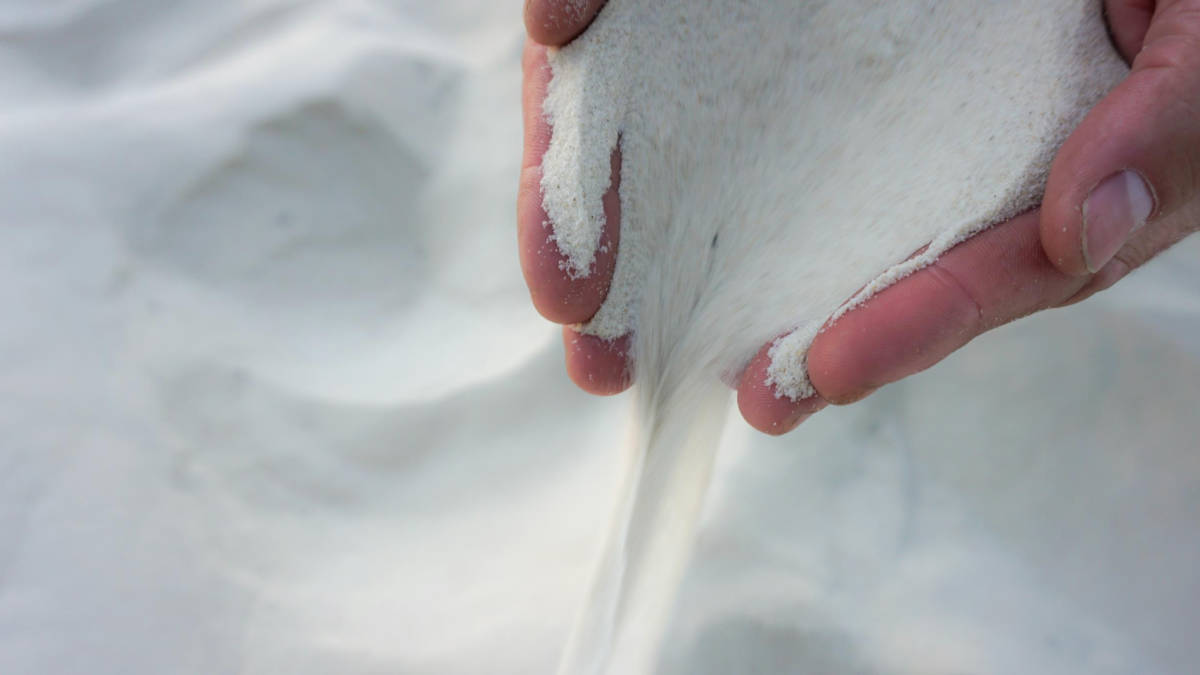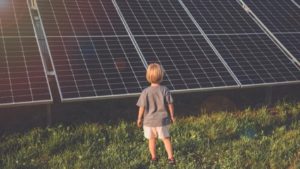From sand to sun: Here’s how this humble resource is slashing emissions and thrilling investors

Silica sand is playing a big part in decarbonising the world. Pic: Supplied
Solar photovoltaics are widely known to be the fastest growing source of renewable energy, but what is less well known is that silica sand is prized for the manufacture of PV panels.
To the casual eye, silica sand looks little different from common beach sand.
However, the unique qualities of high-purity silica sand make it uniquely suited for the manufacture of solar panels — helping the photovoltaic cells capture every iota of the sun’s energies for conversion into clean, renewable electricity.
There are several reasons for this. The chief being that silicon is used in more than 90% of solar panels as a semiconductor because it is a cost-efficient material that offers good energy efficiency.
It also offers high corrosion resistance, long-term durability, optimal thermal expansion properties, good photoconductivity and low toxicity.
Every kilogram of polysilicon – a refined material made from silica – is expected to save more than 7,000 kilograms of CO2 emissions during the lifetime of a solar panel, and increased development of solar could reduce C02 emissions by 21% by 2050.
Not bad for a raw material that looks like it came from a child’s sandpit.
The Australian Government has also noticed the potential of this pearly white sand, adding silica sand to the critical minerals list as part of the 2022 Critical Minerals Strategy — noting its significant global demand.
Proven silica sand potential
So just where can this wonder material – particularly the high purity stuff – be found?
One such place is Cape Flattery in northern Queensland where Metallica Minerals’ (ASX:MLM) Cape Flattery Silica project is located.
While there are certainly other locations in Australia that possess high-quality silica sand, Cape Flattery has one significant advantage – the presence of an existing silica sand mining and shipping operation.
Mitsubishi’s Cape Flattery Silica Mines, which is adjacent to Metallica’s project, has been in production for more than 50 years and continues to produce sand known for its high purity.
This is a big plus for Metallica as it highlights the potential for it to develop a highly attractive project with a long mine life.
All the numbers are checking out
So just how attractive are we talking?
According to the recently released pre-feasibility study, the Cape Flattery Silica project could generate revenue of $2.13B over the 25-year life of the project.
Profitability is also hugely positive with pre-tax Net Present Value and Internal Rate of Return estimated at $290M and 34.9% respectively while capital costs are estimated at a low $79m with payback expected in 3.9 years.
The project has maintained a positive NPV given its stress-testing of various scenarios —reinforcing how robust it is.
As if that wasn’t enough, there’s plenty of scope for growth given that both the ore reserve of 46 million tonnes grading 99.18% SiO2 and broader resource of 53.46Mt at 99.19% SiO2 do not include infill drilling — completed back in December 2021.
This article was developed in collaboration with Metallica Minerals, a Stockhead advertiser at the time of publishing.
This article does not constitute financial product advice. You should consider obtaining independent advice before making any financial decisions.
Related Topics
UNLOCK INSIGHTS
Discover the untold stories of emerging ASX stocks.
Daily news and expert analysis, it's free to subscribe.
By proceeding, you confirm you understand that we handle personal information in accordance with our Privacy Policy.








